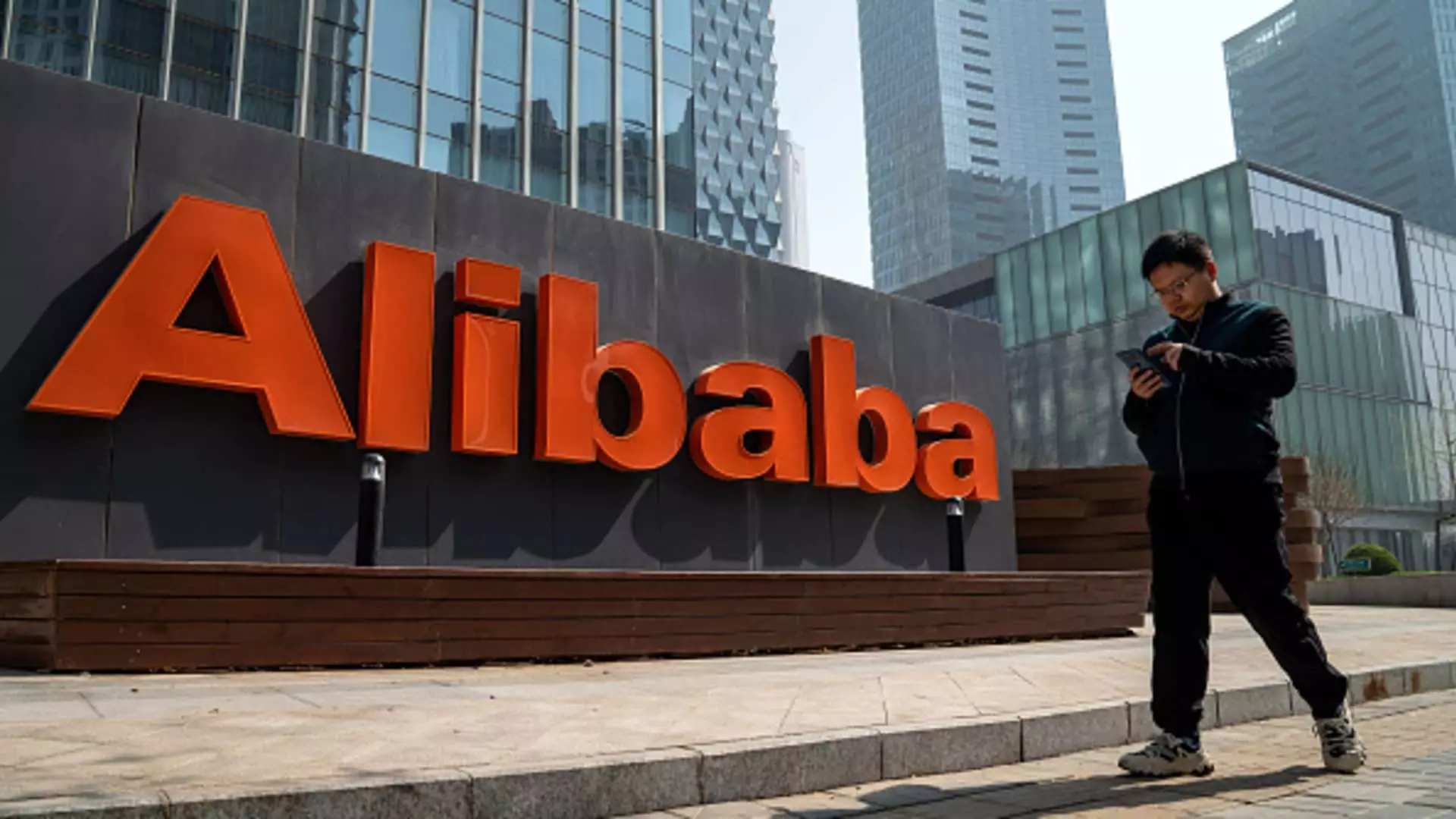On Friday, Alibaba Group, a colossal player in the Chinese e-commerce landscape, released its quarterly earnings report, which revealed a notable increase in net income but disappointing sales figures. For the quarter ending September 30, the company reported a net income of 43.9 billion Chinese yuan (approximately $6.07 billion), marking a staggering 58% year-over-year rise. This impressive figure starkly contrasts with the expected profit, which was forecasted at 25.83 billion yuan by analysts from LSEG. Per the company’s earnings statement, this substantial profit increase can be attributed to favorable mark-to-market changes from equity investments, a decrease in impairment charges on investments, and a rise in operational income.
However, the success story of profits is tempered by the underwhelming sales performance. With revenue reaching 236.5 billion yuan — a modest 5% increase from the prior year — Alibaba’s sales figures fell short of analysts’ expectations, which were pegged at 238.9 billion yuan. The disconnect between impressive profitability and weaker sales raises concerns about consumer spending patterns in the world’s second-largest economy and highlights broader economic challenges that may affect Alibaba’s market trajectory.
In the wake of the earnings announcement, Alibaba’s stock experienced an upward trend, gaining nearly 17% this year to date, with shares rising 3% in premarket trading following the quarterly report. Investors tend to focus keenly on the core business units of Taobao and Tmall, where revenues grew by a mere 1% to 98.99 billion yuan. As Alibaba navigates a challenging market landscape, the performance of these critical segments is paramount in gauging the company’s future.
This comes at a time when the overall retail environment in China appears lackluster, with rivals like JD.com also reporting disappointing revenue figures. The stakes are high, as many in the market look for signals of recovery, especially in light of a recent stimulus package amounting to 1.4 trillion yuan announced by Beijing. The efficacy of these measures in revitalizing consumer confidence and invigorating the economy remains to be seen. While October’s retail sales demonstrated a more encouraging 4.8% year-over-year growth, the forthcoming Singles’ Day shopping holiday could act as an indicator of consumer sentiment.
Looking beyond the challenging domestic environment, Alibaba continues to expand its footprint in global markets. The company reported a remarkable 29% year-on-year increase in sales from its international online shopping platforms, such as Lazada and Aliexpress, amounting to 31.67 billion yuan. This diversification may provide a buffer against domestic downturns, illustrating Alibaba’s potential to leverage its global reach.
In addition to its e-commerce operations, Alibaba is keenly focused on its Cloud Intelligence Group, which reported a 7% increase in year-on-year sales, reaching 27.65 billion yuan for the September quarter. This represents a slight acceleration compared to the previous quarter and demonstrates Alibaba’s collective effort to position itself as a significant player in the burgeoning AI sector. CEO Eddie Wu expressed optimism for this venture, noting that revenues from public cloud products grew in double digits, while AI-related products saw even stronger adoption with triple-digit growth.
The competitive landscape is rapidly changing, particularly as Alibaba adapts to the challenges posed by regulatory crackdowns and intensifying competition both domestically and internationally. Following a significant restructuring prompted by Beijing’s 2022 actions against the tech sector, Alibaba has sought to redefine its offerings. The introduction of AI-infused tools and products underlines the company’s ambition to not just recover but thrive amid these constraints.
Alibaba’s outlook hinges closely on the interplay between the Chinese economy’s recovery and evolving regulatory frameworks. Analysts, including those from ING, suggest that the company’s forthcoming reports will provide critical insights into the economy’s growth dynamics. As it maneuvers through these shifting conditions, Alibaba’s growth strategy seems increasingly reliant on its ability to innovate and expand into new markets while fortifying its core business units.
While Alibaba’s profit growth is certainly commendable, the disappointing sales figures contribute to a narrative of caution. The path ahead appears intricate, with external pressures from the economy and rivals that could influence its long-term stability. As the landscape evolves, only time will tell if Alibaba can maintain its dominant position in the face of these challenges while capitalizing on new opportunities.

Leave a Reply